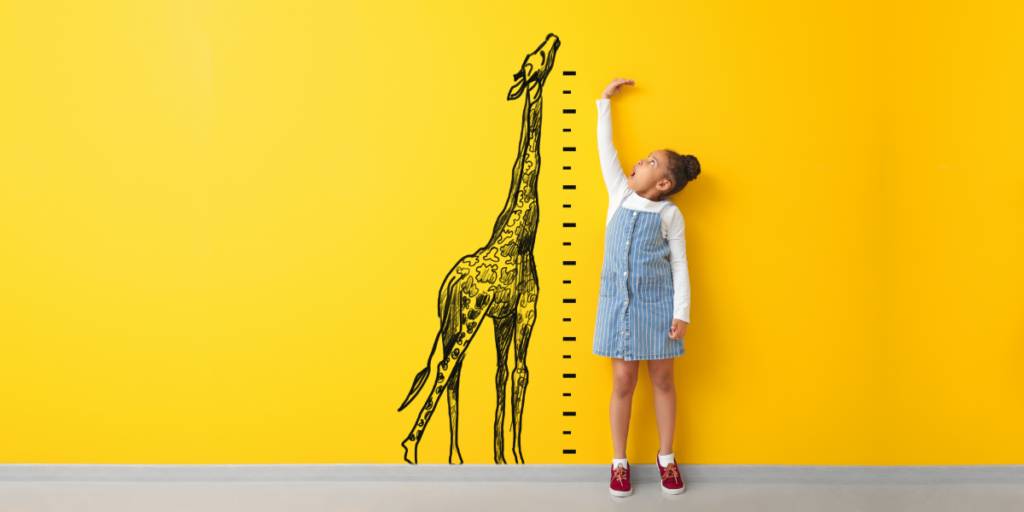A cornerstone element of any business is brand awareness. People who don’t know about your brand won’t buy from you. It’s a valuable KPI for assessing marketing campaign success and a relevant metric to track over time. But how do you track it? How to measure brand awareness?
Continue reading, and you will find out.
This article will show you the ins and outs of measuring the awareness of your brand, from understanding the concept to techniques and tools used to evaluate it continuously.
Brand Awareness Definition
Brand awareness shows the degree to which people recognise and remember your brand. It’s about their familiarity with your products or services, brand name and logo.
A strong brand accompanied by an extended awareness is an asset for any company and a core pillar for effective marketing.
Nowadays, consumers are constantly bombarded with a myriad of options. Building a brand that customers know and trust has massive potential and can be a game-changer. Moreover, it allows you to connect with your audience on a deeper level.
When a business has strong brand awareness, potential clients are more likely to buy its products, recommend them and become loyal customers over time.
A Salsify study from 2022 reveals that 46% of consumers are happy to pay more for products made by brands they trust.
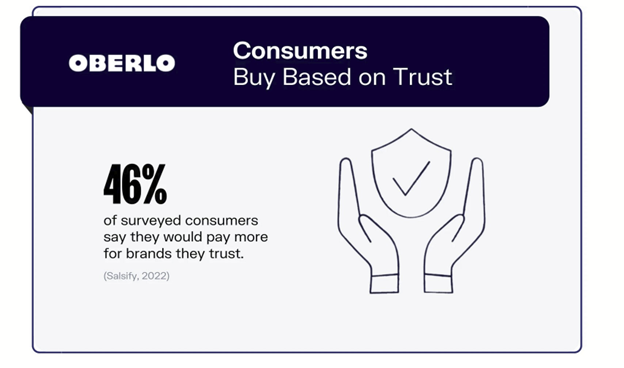
Source: Oberlo
Why Measure Your Brand Awareness?
A simple answer is you need to measure your brand awareness to enhance your marketing efforts. You have to know if your brand is well known, how your audience perceives it and how it compares with the competition.
The output of measuring brand awareness is valuable insights that support your business’s marketing strategies. Thus, you are better positioned to know what marketing campaign works and what doesn’t and adjust accordingly.
Moreover, you can determine how your brand impacts the business growth, sales and customer loyalty.
Advantages of measuring brand awareness
- Identify the brand’s strengths and weaknesses. Spot what exactly your audience likes about your products and what areas need improvement. It’s a sort of compass that guides your business development.
- Gauge your position on the market. If you efficiently measure your brand awareness, you will clearly understand how you stand against competitors. Are your products renowned, or are they yet to be discovered by your audience?
- Sustain your brand expansion. Brand awareness is vital for expansion strategies when you are looking to enter a new market or create new products. As they help assess the potential success of such plans.
- Increase customer engagement. Brand awareness data supports marketing campaigns’ effectiveness and helps target the right audience.
- Build trust and credibility. Most often, people trust brands they already know. Having solid brand awareness helps you stand out from the crowd. And translate into repetitive buys and loyalty in the long run.
Brand Awareness Types
When measuring the impact of your brand, you should consider the types of brand awareness.
There are two major categories:
Unaided brand awareness
Unaided or spontaneous brand awareness refers to your brand name appearing in the customers’ minds when considering a specific product. They indicate your brand without any prompting.
It reflects the strength of the position in the market and the quality of the connection established with your target audience.
Unaided brand awareness example: People often indicate “Apple” without prompting when thinking about a top-quality smartphone.
Aided brand awareness
Aided brand awareness refers to the recognition of your brand when some sort of content is provided, like options and suggestions. This type of awareness is relevant when looking to find out how your brand stands compared to the competition.
Aided brand awareness usually appears in market research studies and surveys.
Example of aided brand awareness: In a survey, you ask people about the car brands they know and provide a list that includes “BMW”, “Toyota”, “Mercedes-Benz”, and “Ford”, and a person says “Toyota” because they heard about it.
How to Measure Brand Awareness KPIs - Key Indicators
You should use multiple indicators to get a complete overview of your brand’s position in the market.
Here are some of the most prominent:
Website Traffic and Particularly the Direct Traffic
A critical dimension of your brand awareness is provided by your website visitors. Check:
- Number of unique visitors. Total number of users that visit your website. The larger this number, the better your brand awareness.
- Number of direct visitors. The number of users that access your site by typing your site address because they already know it.
- Page views per visitor. It shows how many pages a visitor reads and proves interest.
- Time on site. The longer time spent, the better. Another sign of interest and engagement.
You can track these metrics using Google Analytics. Go to “Reports”, the “Acquisition” tab, then click “Overview” and “Traffic acquisition”.
It will show you how much traffic your website is getting and how it’s coming to your site. If you see a lot of direct traffic, that’s an indicator that people are aware of your brand.
Track these metrics over time to see if the number is growing or diminishing. A spurt in total and direct traffic following a marketing campaign can be a good indicator that the campaign successfully raised awareness.
Several tools enable you to look at competitor traffic statistics. For example, SEMRush shows how much traffic a website gets and how that traffic breaks down by source. This can be useful for benchmarking your brand against competitors and seeing how you stack up.

Source: Semrush
Social Media Presence and Engagement
Being present on social media channels is another powerful way to expand brand exposure.
How to measure brand awareness on social media? Keep an eye on:
- Follower count. It indicates the total number of followers on your social media accounts. The larger this number, the higher your awareness.
- Follower growth rate. The rate with which your number of followers increases. A steady and consistent increase is a positive sign for brand awareness.
- Post reach. It shows how many users see your posts. This number should be as high as possible.
- Engagement rate. Calculate the report between the number of links, comments, and shares and the number of followers. A high engagement rate reveals interest.
One of the most common ways to measure brand awareness is by looking at the number of followers on social media. This metric can be helpful in a couple of ways.
First, it can give you an idea of how many people are exposed to your brand. If you’re seeing a steady increase in followers, that’s a good sign that your brand awareness is growing. This metric is the simplest to track, and it’s also simple to compare growth with your main competitors.
However, it’s essential to remember that the number of followers is not always an accurate measure of brand awareness. Sometimes, people may follow your brand without knowing much about it.
If, for example, you post entertaining content that isn’t relevant to your business or if your content is inconsistent, people may follow you because they enjoy your content. Still, they may not be aware of your brand or what you do.
So, while the number of followers is a good metric to track, combining it with other metrics is essential.
Search Engine Visibility
We all, when looking for products and services, use search engines. Track:
- Organic search rankings. They happen when your site is listed in search engine results for relevant keywords. A large number of keywords for which your site ranks and higher positions in these rankings indicate better visibility and, thus, increased awareness.
- Branded search volume. How many times users search for your brand name is an obvious sign of awareness.
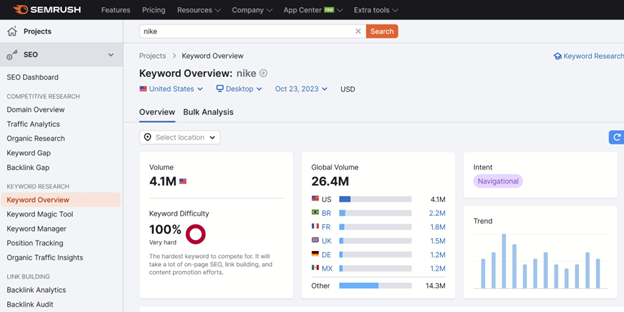
Source: Semrush
Brand Mentions and Sentiment Analysis
Another common way to measure brand awareness is by tracking how often your brand is mentioned online.
It can be done using a tool like Google Alerts, which will notify you whenever your brand is mentioned online. However, there are more viable options for big brands that get many daily mentions.
More prominent brands can use a powerful tool like Symanto to track brand mentions over time. Symanto generates a graph to show you where mentions peak and trough. With this graph, you can assess which brand awareness-raising campaigns were most effective.
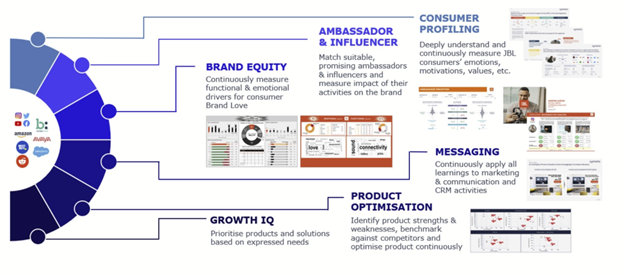
You can also compare your brand mentions against your competitors and see which campaigns were most effective for them.
More than being mentioned is required. How people talk about your brand is even more critical. Hence, you have to know that. Consequently, you must monitor your brand and analyse the sentiment associated with these brand mentions.
As such, you need an advanced tool capable of gathering and analysing all data that is of interest to extract meaningful insights to drive your brand strategy.
One such tool is Symanto, a robust AI-driven text analysis solution that enables you to scrutinise your brand via the customers’ lens. Plus, it uncovers actionable insights to back with data on your marketing strategy.
Evaluate your brand using quantitative and qualitative metrics and pre-defined, tested frameworks.
Symanto has the proper solution for you if you don’t know why your brand loyalty is low despite all your efforts. If you cannot identify why some business areas register performance differences compared to that of the competitors. Or if you don’t have the right tools to enhance brand engagement.
With Symanto’s technology, you can:
- Collect all the relevant social mentions.
- Monitor significant customer conversations concerning your brand.
- Evaluate the degree of connection between your brand and your audience. And find out what is that of the competition.
- Assess your brand health considering emotional and functional equity.
- Craft an effective marketing strategy powered by data.
Symanto’s brand health-related features are:
- Exhaustive data collection. Scan all data points of interest available online.
- Brand share of meaningful conversations. Operate only with relevant data and remove noise, duplicates, spam, and unrelated mentions.
- Competitor benchmarking. Assess your main KPIs and compare them with competitors’ similar indicators.
- Emotional equity. Determine the customer’s experience elements that impact their emotional experience.
- Functional equity. Identify what products generate the most significant volume of emotions towards the brand.
Social media channels and review sites are all fertile ground for sentiment data. Customers and people mentioning your brand online are sharing their opinions organically. You can parse through this data manually, but this has several main issues:
- Human error. This task is repetitive, so human researchers may skim over comments without thoroughly reading them.
- Researcher bias. If they want a specific outcome, they may unwittingly skew the analysis.
- Time-consuming. Manual analysis doesn’t make sense when dealing with large data volumes.
Thankfully, NLP technology is rapidly advancing, and it’s now possible for AI to read, process and analyse thousands of comments in a matter of minutes and extract accurate insights into the sentiments of your customers and people talking about your brand online.
You need to track whether or not the general sentiment around your brand is positive, neutral or negative.
A positive sentiment is usually the result of a healthy brand image. A negative sentiment may require supplementary efforts to improve.
Sentiment analysis
A robust sentiment analysis delivers advanced and actionable insights so you can start making data-backed decisions immediately.
Symanto’s AI-powered technology provides accurate and top-level text analysis continuously improved by a team of world-class deep learning experts. It involves two levels:
- Text-level sentiment: Considers the tonality of an entire text.
- Topic-level sentiment: Spots individual attitudes towards a particular topic.
The main advantages of Symanto’s sentiment analysis are:
High accuracy: We use models trained on billions of texts, refined by linguists and industry specialists, producing highly accurate outcomes and diminished false-neutral results.
AI-powered: Analysis based on the entire context.
Industry-specific models: Pretrained models that capture the nuances of the respective industry.
Topic-level sentiment analysis: Determine granular attitudes towards a specific topic.
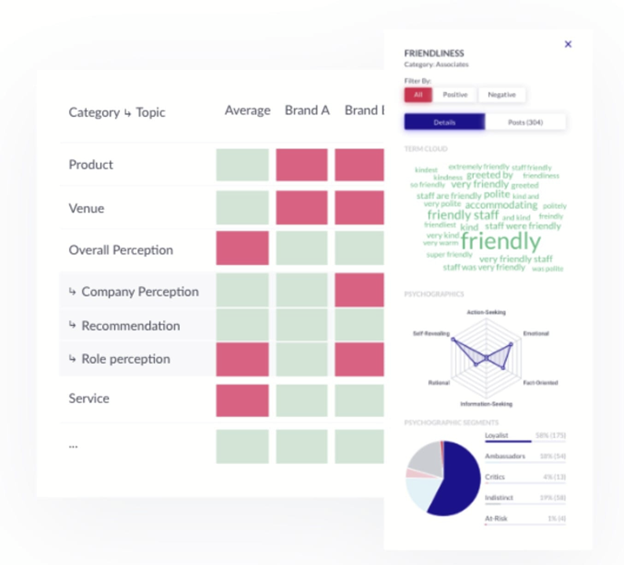
Brand Awareness Surveys and Customer Feedback
Another way to measure brand awareness is by conducting surveys.
Surveys provide direct access to your target audience’s opinions and perceptions. And they help assess the awareness of your brand.
Surveys are relevant because they gather unfiltered insights, measure aided and unaided awareness and provide an overview of brand awareness in time.
This may be a time and resource-consuming method, but it can provide valuable information about how people perceive your brand. It can also enable you to ask more specific questions.
When creating a brand awareness survey, there are a few key questions to ask:
- Do people know your brand?
- What do they think of your brand?
- What words do they associate with your brand?
- When was the first time they heard about your brand?
- When was the last time they heard about your brand?
- Are they likely to recommend your brand to others?
You can use an online survey tool like SurveyMonkey, Typeform or Google Forms to create and distribute your survey.
You have the opportunity to expand your questionnaire to include open-ended questions so that respondents can write freely about their experiences or perceptions of the brand.
With Symanto technologies, you gain the ability to process hundreds of responses within just a few steps. Symanto’s cutting-edge natural language processing (NLP) technology analyses unstructured data in written form to decipher meaning and sentiment.
It then transforms its findings into intuitive data visualisations so that you can clearly see, for example, which topics are mentioned most and the people’s sentiments behind each topic.
Brand Recall Studies
They are valuable brand awareness measurement tools that offer a holistic view. Thus, they allow you to polish your marketing strategies to improve brand recognition.
Brand recall studies determine how easily your target audience remembers your brand. And assist you in understanding how strong your brand’s presence is in the customers’ minds.
Spontaneous recall is a clear demonstration of the depth of brand awareness.
Brand Recognition Tests
They are another category of effective instruments for measuring brand awareness and estimating its strength.
Recognition tests determine how well your brand is recognised when presented to your target audience, how memorable it is and how well it stands out visually.
You can use them to track the evolution of brand recognition over time and to find out how to improve the brand’s visual identity and messaging.
Challenges in Measuring Brand Awareness
As with any other activity, brand awareness measurement has challenges but can be avoided with a strategic approach.
Pay attention to:
- Ignoring unaided awareness. You can easily miss the depth of awareness if you concentrate just on aided recall.
- Having vague objectives. Clear objectives are an absolute must for an effective measurement of brand awareness.
- Relying just on surveys. Using just surveys for measuring brand awareness means missing many valuable insights provided by other methods.
- Inconsistent metrics. If you use a variety of metrics for each measurement, comparing the results may be difficult.
- Focusing on the short term. When assessing brand awareness, you should also consider the long term.
How to Measure Brand Awareness Examples - Successful Measurement Strategies
Check some real-world examples of how world-renowned brands measured their brand awareness.
“Share a Coke” campaign - Coca-Cola
This campaign involved personalising Coca-Cola’s labels with the names of persons.
Coca-Cola’s marketing team tracked how often clients shared social media images with the customised bottles to measure brand awareness. The amount of user-generated content was an effective instrument to measure brand awareness.
Branding consistency - Apple
Apple’s minimalist and consistent branding style brought them universal recognition.
To measure brand awareness, they run recognition tests of their logo and design of their products.
Influencer partnerships - Nike
Nike has extensively used partnerships with celebrities and athletes, who either wear or share content with their Nike products.
Their marketing team monitored the impact of these partnerships on social media by measuring their followers number, the growth rate, the engagement rate and hashtag usage.
As you can notice, creativity and consistency play a central role when measuring and enhancing brand awareness.
Take Away
Remember that brand awareness is not about numbers but creating a connection with your target audience. When you decide how to measure your brand awareness, use a combination of methods to get a comprehensive overview.
Symanto’s NLP technology can help you automate brand health and awareness analysis to quickly and easily glean insights from social media data and review sites. This can save you time and resources and give you a more accurate picture of how people feel about your brand. Get in touch to find out more and get started with Symanto today.
